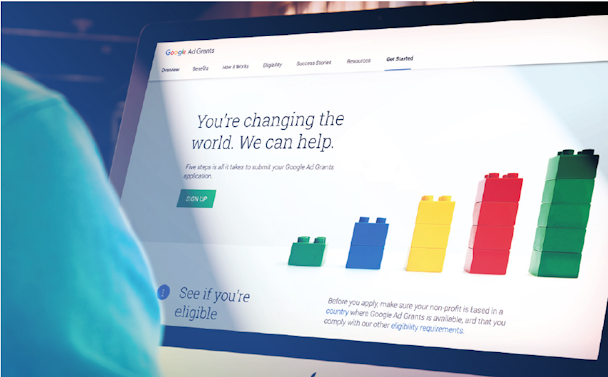Getting to grips with Google Ad Grants
While third sector organisations face many of the same marketing issues as any other brand in 2018, there are some important areas of difference.

Since Google tweaked its offer of free AdWord accounts for non-profits, charities can now promote quality over quantity
For example, given the importance of reputation to charities, ‘brand safety’ has become a top-level concern. In addition, third sector conversion paths can be very long: people who donate, volunteer or fundraise often need to be nurtured for months or even years before converting, demanding a sophisticated approach to customer relationship management (CRM) from charities.
The new year has brought with it another key area of difference, with the potential to impact massively on the digital strategy of many non-profits. Introduced on 1 January 2018, the Google Ad Grants initiative has undergone a number of significant changes.
Google Ad Grants: the basics
Google Ad Grants for non-profits are free AdWords accounts where Google sets aside an amount of spend (always denominated in dollars) for charities to use. This free advertising has traditionally come with a number of key restrictions, which include:
- Use of the program cannot compete with regular ‘paid’ accounts. In fact, grants auctions are resolved entirely separately from ‘normal’ auctions.
- The budget can only be used for search campaigns, ie no other campaign types normally available in AdWords (GDN, YouTube, Gmail Ads) can be used.
- It cannot be used to support an e-commerce offering.
- Use of the ‘audience layer’ is prohibited – targeting based on cookied users or adjusting bids based on this are not available.
- Click-through rate (CTR) must remain above 1% or an account risks suspension.
- The maximum bid on a given keyword is capped at $2.
Google’s new changes shake up the world of Grants quite considerably. The free nature of the spend led some advertisers to drive an almost ‘spammy’ approach to Grants, setting the maximum bid of $2 account wide and aiming to produce as much low-quality site traffic as possible. Based on the changes introduced in January, it would seem that Google is keen to see an improvement in the overall quality of Grants accounts, including:
- Grants accounts must now maintain a 5% CTR each month or face suspension. This is a sizeable increase, however, the intent is to ensure that Grants activity is more highly targeted than before. Some Grants accounts may need to downsize to ensure that they only focus on the most relevant activity to drive CTRs.
- Conversions bidding can now be maximized. Previously, the $2 maximum bid had meant that bidding strategies were somewhat redundant and quality score was the key consideration since a competitive bid was $2. This latest change should make for much greater competition and lead to more dynamic and indeed efficient grants auctions. This should be a win for everybody actively managing their own Grants accounts.
- Single word keywords are no longer permitted (with some exceptions for brand keywords and some other words such as medical conditions). Again, this seems like a minimal change that will help to clean up advertisers who were casting a ‘broad but low quality’ net.
- Keywords with a quality score of two or less are no longer permitted. This will be another very limited change. Keywords with scores this low will rarely produce relevant or high volume traffic.
- Names of places and names of historical events/ people aren’t permitted. This is perhaps the most interesting and controversial change, as a number of this type of keyword are hugely relevant to specific charities with historical individuals representing key case studies for the charity. It will be interesting to see how aggressively Google implements this policy change.
What do the changes mean for Google Ad Grants strategy?
Grants accounts have always been about driving awareness and traffic to a site. Third sector advertisers now need to temper this with more of a quality-over-quantity approach, bringing it in line with contemporary paid search best practice. Going forward, Grants users should make sure they are covering brand keywords to help drive CTR and really reassess coverage. It needs to be as relevant to the landing page as possible, as well as relevant to the intended user. It's critical to take advantage of ways to boost CTRs, like Dynamic Keyword insertion and Dynamic Search ads. The more relevant copy is to the user the higher one can drive CTRs and quality scores.
Where some approaches are no longer possible, look into how a paid account could support Grants activity. If relevant historical keywords become disapproved, switch them to paid with a low bid or only targeting returning or cookied users that may still drive the conversions of the future.
All charity organisations are different, but one thing does unite them: the need to get the best out of every available drop of budget, every available tool, employee and volunteer in order to keep on doing great work in the local (and wider) community. In order to support that, it is vital that marketers remain as flexible, pragmatic and proactive as possible.
James Olver is senior account manager at Merkle.
This article was originally published in the charity issue of The Drum Network magazine series. You can purchase your copy here.
Content by The Drum Network member:

2Merkle
Merkle is a leading data-driven, technology-enabled, global performance marketing agency that specialises in the delivery of unique, personalised customer experiences...
Find out more
